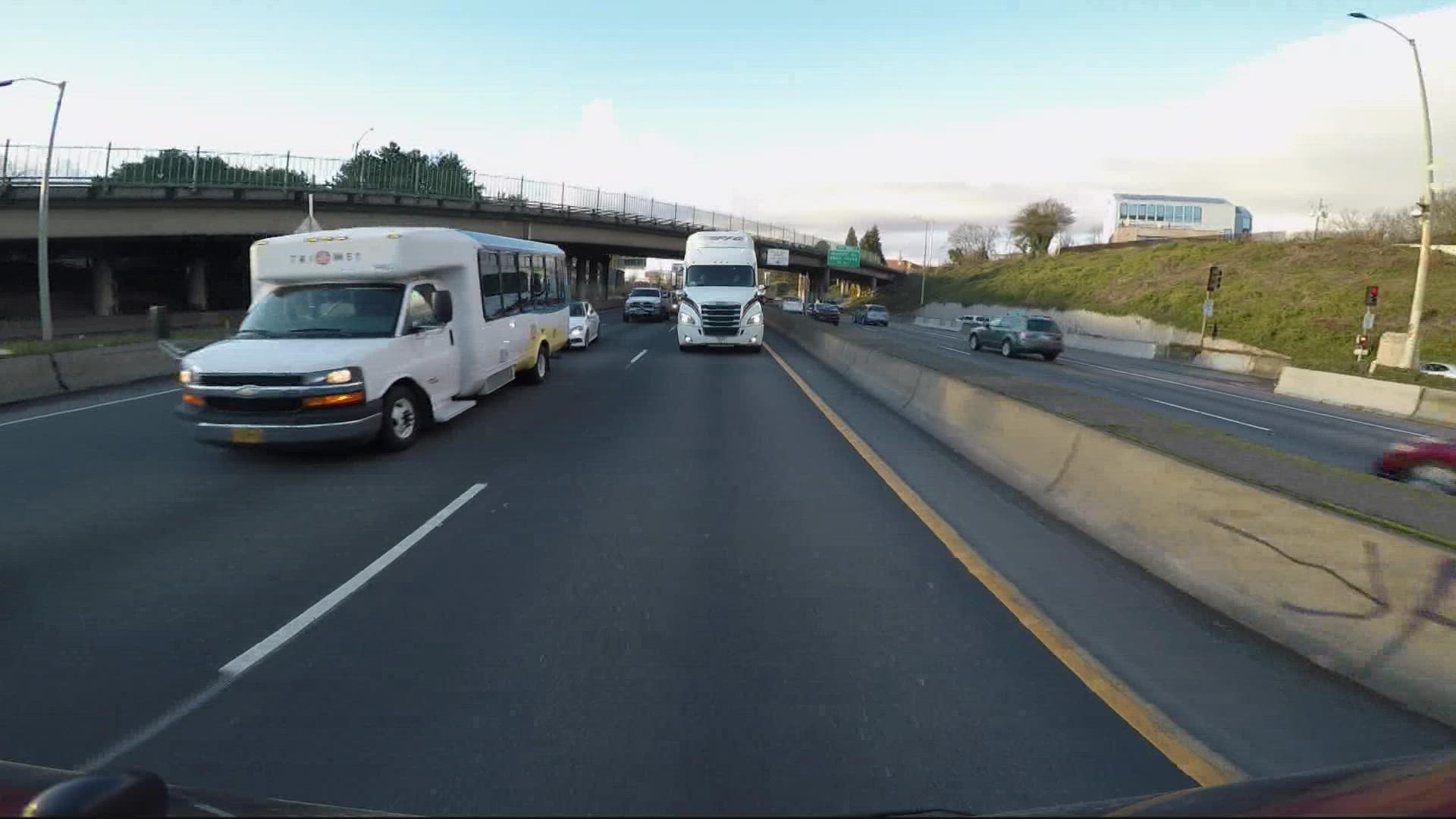PORTLAND, Ore. — The Federal Highway Administration (FHWA) has rescinded its approval for the Interstate 5 Rose Quarter project and asked the Oregon Department of Transportation (ODOT) to produce an updated Environmental Assessment.
The decision was prompted by changes made to the project design in the 15 months since the FHWA approved the project's original Environmental Assessment and issued a "Finding Of No Significant Impact," according to a Jan. 18 letter from FHWA Oregon division administrator Phillip Ditzler that was shared online by the group No More Freeways.
In a press release on Thursday, ODOT said the changes in question pertained to the new "Hybrid 3" design for the project, which the Oregon Transportation Commission directed ODOT to develop in September.
ODOT said it intended to move forward with an updated Environmental Assessment to incorporate Hybrid 3, and that the project's timeline remained unchanged, with construction set to begin in 2023.
“Updating the Environmental Assessment is an important step to advance the community’s preferred Hybrid 3 highway cover design and is a step we anticipated and are excited to take,” project director Megan Channell said in a statement.
Ditzler's letter struck a similar tone, stating that the project, "is important to the adjacent community and the state of Oregon, and the FHWA looks forward to helping the Oregon Department of Transportation bring it to fruition most expeditiously."
Still, No More Freeways and other project opponents hailed the news as a victory, and called on ODOT to reconsider the project in its entirety and evaluate alternatives to the freeway expansion.
No More Freeways and two other community groups sued the Federal Highway Administration last year, alleging that the original approval decision violated the National Environmental Policy Act.
The revocation of the "Finding Of No Significant Impact" was one of the outcomes the groups sought, although the lawsuit is still ongoing and Ditzler's letter doesn't mention if his decision had anything to do with it.
The lawsuit also sought to compel ODOT to produce a full Environmental Impact Statement for the project rather than the more limited Environmental Assessment, but Ditzler's decision only requires the agency to produce an updated Environmental Assessment for reevaluation.
Project history
The Rose Quarter project would widen a stretch of I-5 between the Interstate 84 and Interstate 405 junctions where the freeway currently narrows to two lanes in each direction. ODOT has argued that the project will decrease crashes in the corridor and resolve a regional traffic bottleneck.
Opponents have argued that the project would negatively impact local air quality, particularly at the nearby Harriet Tubman Middle School, and that a freeway expansion runs contrary to Oregon's goal of reducing carbon emissions to combat climate change.
The project also included a plan to build caps over part of the I-5 through the Rose Quarter in order to address the damage done during the freeway's original construction, which demolished part of the historically Black Albina neighborhood.
That part of the project also proved contentious, and the nonprofit group Albina Vision Trust, which originally served as a project advisor, walked away in June 2020, stating that ODOT hadn't taken its input seriously.
Gov. Kate Brown stepped in last summer to try to break the logjam, convening a series of stakeholder meetings that ultimately produced the Hybrid 3 design, which included bigger caps that could support one- to three-story buildings with an option for five- to six-story buildings, although it also raised the project's cost to the current estimate of $1.2-1.25 billion.

